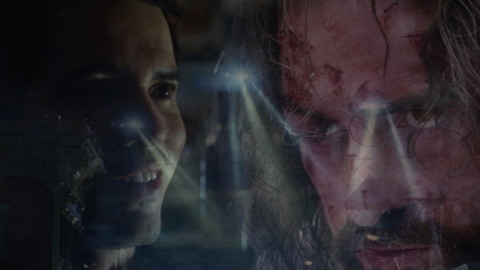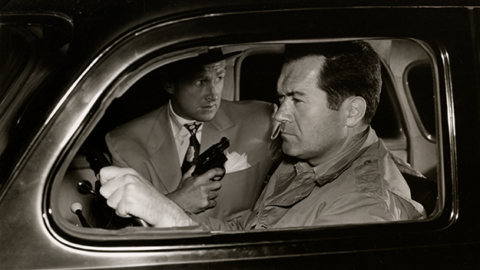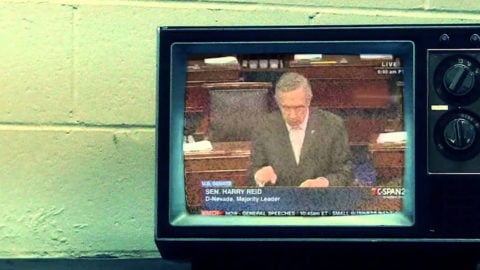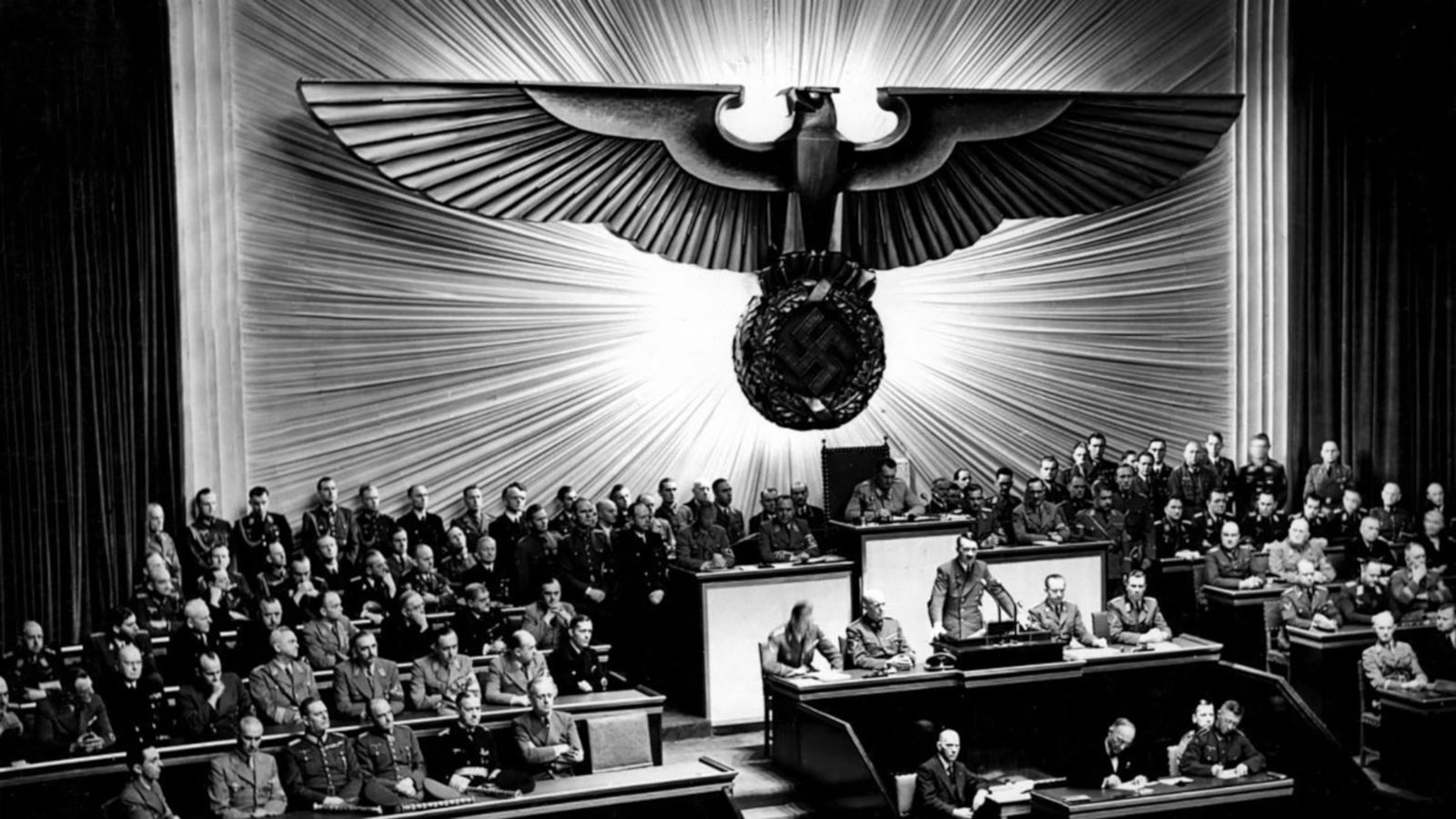
Triumph of the Will
There are movies that raise the issue of artistry and evil. D. W. Griffith’s 1915 Klan-fest The Birth of a Nation is one. Leni Riefenstahl’s 1935 paean to Adolf Hitler, Triumph of the Will, is another.
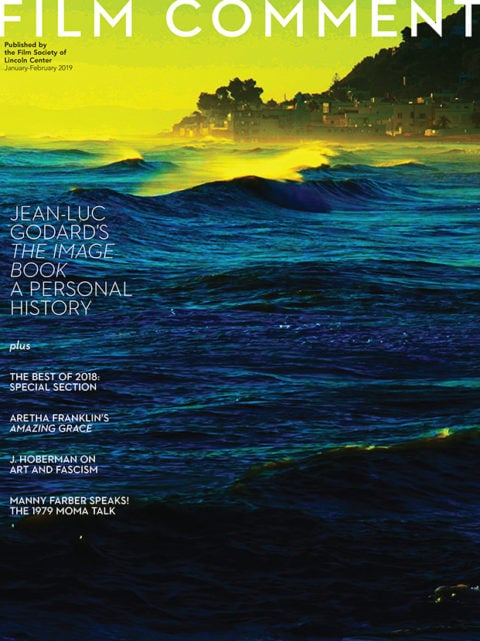
One can look at these two skillful, innovative, intermittently exciting movies as exercises in pure form, and many people do. There is something purely cinematic about them—both exemplify cinema as an inherently authoritarian medium as well as an unprecedented rabble-rousing technology for emotional manipulation.
The Birth of a Nation uses drama to contaminate, personalize, and rewrite history; even more steeped in the magic of the movies, Triumph of the Will demonstrates how documentary cinema can be used to frame an event and fabricate an idol. That the history Griffith took upon himself to revise was that of a brutal white-supremacist counterrevolution and the personality whom Riefenstahl was commissioned to glorify turned out to be the 20th century’s leading homicidal psychopath are facts that these movies have to live with—if they are to live at all. Such toxic film objects should be handled with care. They have to be taught, lest they teach us.
Triumph of the Will is also a film that, often excerpted, exists in several forms. I first saw the complete 114-minute version at Anthology Film Archives in November 1972 (four days before Richard Nixon was reelected president), writing in my movie journal that it was “as repetitive as a six-unit porno show.” In fact, it was stupefying not least because as was Anthology’s wont, the crisp 35mm print—which I now realize could only have come from the filmmaker herself—was shown without the distraction of English-language subtitles.
My ellipsis-ridden notes read as follows:
I was numbed by the recurring [drawn swastika followed by an “s”]… kept nodding… the film is very abstract… the lobotomized fervor of the crowds… marching soldiers… Baby Face Hitler w his weird tics… continual screaming rhetoric… boosted soundtrack… martial music… reaction shots and close-ups. [Riefenstahl] combines the teachings of Kuleshov w the lyrical use of clouds, vapors, raindrops & to achieve Nazi Beautility.
The next night, either by coincidence or design, I caught a salutary, anti-fascist double bill at the New Yorker theater: Duck Soup (1933), which I knew by heart, and Cobra Woman (1944), which I had heard of but never seen. With regard to the latter, unaware that the movie was directed by German-Jewish refugee Robert Siodmak, I noted that “The Cobra Dance should be spliced into or shown w TRIUMPH OF THE WILL.”
Wasn’t it obvious?
Hardly a fluke, Triumph of the Will is an organic product of cinema history, a synthesis of Metropolis’s monumental mass ornament, Potemkin’s pow, and Hollywood extravagance. A partially staged documentary on the 1934 Nazi Party Congress in Nuremberg, Triumph of the Will was produced by order of the Führer who also chose the title, selected Riefenstahl to direct, and went to Nuremberg to supervise final preparations. Riefenstahl herself was a sort of Unterführer, commanding a platoon of technicians complete with 16 camera operators in military uniform; Nuremberg built new bridges, ramps, tracks, and towers to her specifications, some designed by Hitler’s favorite architect Albert Speer.
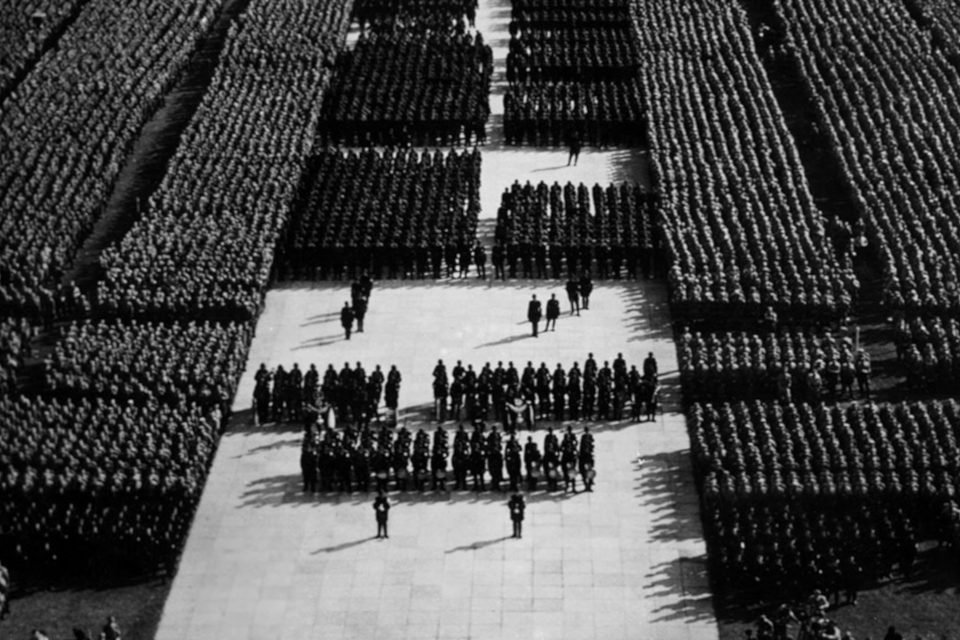
Nsdap/Kobal/REX/Shutterstock
Speer further contributed to Triumph of the Will in its grandiose March 1935 world premiere by redesigning the façade of Germany’s largest theater, the Ufa-Palast am Zoo in Berlin. Sweeping spotlights illuminated 19 gigantic crimson swastika flags. The talons of a huge imperial eagle, wings spread across the theater’s main entrance, clutched a laurel wreath encircling another swastika. No movie had been so appropriately presented since The Birth of a Nation had its Atlanta premiere complete with a parade of the newly reconstituted Ku Klux Klan marching down Peach Street in full hooded regalia.
Despite the hoopla and unlike Griffith’s film, Triumph of the Will did not prove particularly popular with the general public—or so we’ve been told. Then as now, it was a movie for the elite, something other than entertainment. Minister of Propaganda Joseph Goebbels presented Riefenstahl with the National Film Prize. Her movie won the award for Best Foreign Documentary at the Venice Film Festival; it was shown (and, according to the filmmaker, decorated) at the same 1937 Paris Exposition that unveiled Picasso’s anti-fascist mural Guernica.
The Museum of Modern Art’s film curator Iris Barry acquired a print from the Reichsfilmarchiv during her 1936 tour of Europe. Adding Riefenstahl’s Triumph to MoMA’s new film library, Barry included an excerpt in a documentary program at Washington’s Mayflower Hotel in May 1936, shown to an audience of dignitaries that included Supreme Court justices, cabinet members, and congressmen. Another print seemed to have circulated in members-only screenings sponsored by the German-American Bund; in July 1939, there was at least one theatrical screening at the 96th Street Theatre in Manhattan’s heavily German neighborhood, Yorkville.
Triumph of the Will then took on a second life as a sort of documentary of itself. MoMA created a 45-minute study version, begun in late 1940 and completed the following spring by Edward Kerns, a veteran editor employed by the Film Library. In 1942, after the U.S. entered the war, Frank Capra saw MoMA’s version—vastly improved with a streamlined chronology and the elimination of lengthy speeches by the Nazi hierarchy—and incorporated some material into the Why We Fight series. Nazi propaganda was turned on its head. The same year, Charles A. Ridley of the British Ministry of Information edited footage from a British Film Institute print of Triumph of the Will and scored it to a popular dance tune that had been specifically condemned by the Nazis for the three-minute short The Lambeth Walk.
Barry brought MoMA’s Triumph of the Will to Hollywood for an invitation-only screening in early 1943. The abridged film, which included Barry’s cautionary introduction, was first shown to the public at MoMA during the summer of 1943; by the year’s end it appeared in MoMA’s rental catalog, along with three other examples of Nazi propaganda. It would be another decade before Amos Vogel’s Cinema 16 offered the full Triumph of the Will as part of “A Program of Restricted Nazi Propaganda Films” on May 10, 1954, in the midst of the televised Army-McCarthy Hearings, by special permission of the United States Department of Justice. Was it art or something else? Vogel, an Austrian Jew who fled Vienna at age 17 after the 1938 Nazi Anschluß, hedged his bets, calling Triumph of the Will a “cinema masterpiece, one of the greatest propaganda films of all time . . . a huge and disturbing film spectacle.”
Riefenstahl, by this time campaigning to reestablish her reputation, would maintain that, despite assertions in the 1935 pamphlet Behind the Scenes of the Reichs Party Conference Film, Triumph of the Will was in no way staged or planned along with the rally, but simply reportage—a pioneering work of cinema verité rather than sensational propaganda. In the early 1960s, she successfully claimed the movie’s rights, managing its distribution and profitably licensing clips to documentarians. The Third Reich’s last glamorous survivor was interviewed by Cahiers du Cinéma and attended the Berlin Film Festival to present her old movies. Meanwhile, MoMA’s abridged Triumph of the Will began turning up at American college film societies—Film Comment’s 1965 Riefenstahl issue references a Columbia University program that included the film along with such other outré antiques as The Outlaw and King Kong.
MoMA had shown Riefenstahl’s less problematic 1938 film Olympia in 1954; it was not until 1970 that MoMA appears to have shown the full-length version of Vogel’s “cinema masterpiece.” Anthology Film Archives opened later that year, with Triumph of the Will and Olympia both chosen, along with The Birth of a Nation, by a selection committee as part of the institution’s Essential Cinema. The early 1970s brought Riefenstahl’s aesthetic rehabilitation and more. Film Culture gave her much of an entire issue and half the cover in 1973.The same year, Niki de Saint Phalle’s New York Film Festival poster discreetly included the first names of three canonical female directors: Agnes, Shirley, and Leni, while Riefenstahl was profiled and clips from her oeuvre were shown on the CBS Sunday morning television show Camera Three.
The first Telluride Film Festival, in September 1974, courted and reaped controversy when it elected to honor Riefenstahl, along with Francis Coppola and Gloria Swanson. The New York Times report (“Hitler’s Favorite Filmmaker Honored at Colorado Festival”) began with Swanson’s irate comment when a reporter requested a comment regarding the tumult inspired by a rival diva’s presence: “Why don’t you ask me about me? . . . There has been plenty of scandal and rumor about me. Why don’t you ask me about that?”
Riefenstahl’s public admirers would include critics (John Simon, Jonas Mekas), filmmakers (Jean Cocteau, Paul Morrissey, perhaps ironically, and Dušan Makavejev), and celebrity artists (Andy Warhol, Helmut Newton). At various times, Madonna and Jodie Foster expressed interest in playing the lead in a Riefenstahl biopic. Mick Jagger was a fan who according to Leni saw some of her films “as often as 15 times.” Other admirers of her work included two professional propagandists, Roger Ailes and Steve Bannon.
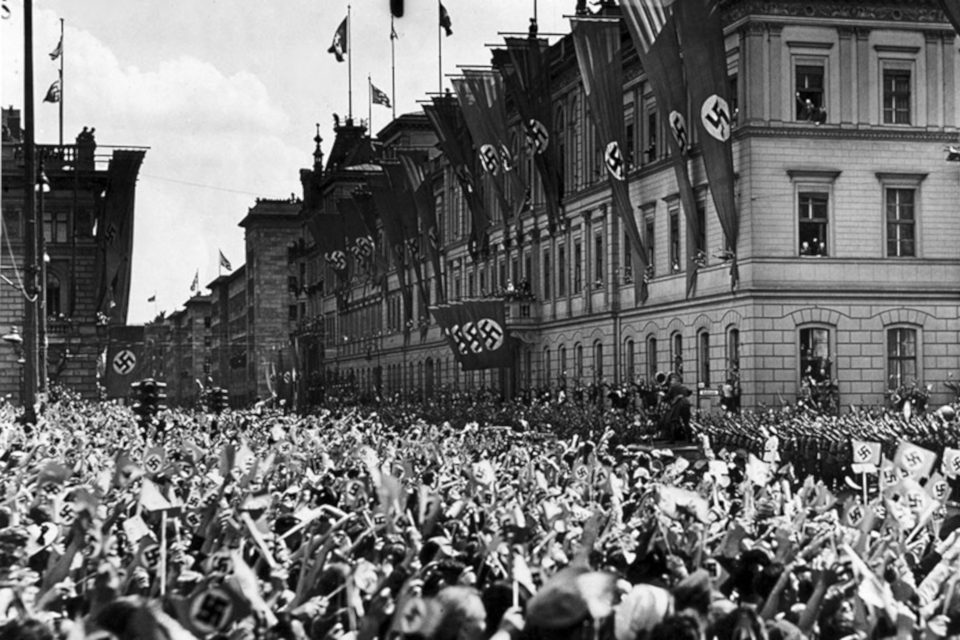
Contemporary Films Ltd./Photofest
So much sympathy for the devil. In 1974, Riefenstahl photographed Mick and Bianca Jagger for The Sunday Times of London, him in a canary yellow suit, her in a white lace frock holding a matching parasol. Bianca returned the compliment by publishing an admiring profile in Andy Warhol’s Interview, complete with Peter Beard photograph, captioned “The Dynamic Duo,” that showed the two ladies swanning around town.
Bianca’s tribute began by citing Leni’s “internationally acclaimed documentaries” (“personally commissioned by Hitler over the objections of Propaganda Minister Goebbels”) and ended by talking about the “hurt” her new friend had suffered as an artist, not only from the jealous Goebbels: “What is so sad about this woman with such a capacity for creation is that she has been stopped at so many points by a world of politics.” What goes around comes around. It was not long after the Interview appreciation that Riefenstahl’s rehab was partially stymied. In early 1975, The New York Review of Books published Susan Sontag’s essay “Fascinating Fascism,” which argued that, Triumph of the Will aside, Riefenstahl’s aesthetic could be seen as authoritarian glorification of power and coercive perfection.
It may be more tactful to promote Olympia as Riefenstahl’s magnum opus, but for all its soft-core prurience, slow-motion heroics, and editing sleight of hand, the sports film lacks Triumph of the Will’s taboo frisson and diabolical cool. George Lucas tipped his hat to the film at the end of Star Wars, as did John Milius in the beginning of Red Dawn. Art seems too simple a word to describe this film object. Is it demagogic genius? Nazi porn? Photo-op run amok? Bloody bore? Film maudit? Ga-ga valentine addressed to the Führer?
If you’ve read Riefenstahl’s memoir—in which she describes her supposed first encounter with the not-yet-Führer as a cosmic orgasm (“It seemed as if the earth’s surface were spreading out in front of me . . . spewing out an enormous jet of water, so powerful that it touched the sky and shook the earth”)—or Behind the Scenes of the Reichs Party Conference Film, which begins by thanking Hitler for his unprecedented generosity, you have to believe that it’s the latter. “We are awed by the enormous strength and freshness of the Führer,” she writes, and also credits him for the beautiful weather.
Let’s just call it the Nazi “Mona Lisa,” although it’s fair to say that Triumph of the Will has at least as much to do with the nature of the film medium as it does with the Hitler cult. Walter Benjamin might well have had the movie in mind when he wrote “The Work of Art in the Age of Mechanical Reproduction” (first published in 1935 and revised several times thereafter). Even if not, MoMA’s Triumph of the Will can be usefully employed to illustrate Benjamin’s notions of cinematic fakery (“the equipment-free aspect of reality has become the height of artifice”), and the construction of a movie star (“the spell of the personality”), as well as, most obviously, the aestheticization of politics.
Much is made of Riefenstahl’s camera placement—her use of close-ups and low-angle shots. But even more important is her orchestration of sound. The music in Triumph of the Will frequently dictates the rhythm of the editing (small wonder that she and Walt Disney felt an artistic kinship). Credit her with a useful example of the total—or totalitarian—mobilization afforded by the dynamic use of synchronous sound. Screened in the context of the Disney “Silly Symphony” Music Land or Oskar Fischinger’s Composition in Blue (both 1935), as well as Jean Negulesco’s Calling All Girls, a 1942 compendium of Busby Berkeley’s 1933-35 dance numbers, MoMA’s Triumph is the original music video. That’s entertainment!
I’m willing to bet that few of Riefenstahl’s non-Nazi fans ever sat through Triumph of the Will’s turgid full version. Indeed, Luis Buñuel, who worked at but not for MoMA—employed by the Motion Picture Division of the Office of the Coordinator of Inter-American Affairs (OCIAA) in the early 1940s—liked MoMA’s cut so much that he took credit for editing it. Early references to Buñuel’s claim may be found in a 1961 article by Francisco Aranda in the British journal Films and Filming and the Ado Kyrou monograph first published in France in 1962. The most elaborate iteration seems to be Buñuel’s long interview with Max Aub, recorded around 1970 but not published until 1985, after the filmmaker’s death.
Buñuel told Aub that he was working for the OCIAA when he cut Triumph of the Will down from 12 to six (or four) reels for distribution in Latin America. The problem was, he made the movie better! “They got so scared that, after ordering 18 copies for the Spanish American countries, they decided not to use it for fear that the level of brutality and the show of force would be counterproductive.”
Although these prints were never shown, Buñuel suggests that Iris Barry decided to screen his abridgment for Charlie Chaplin and René Clair, a claim repeated in a profile by Carlos Fuentes published in The New York Times Magazine in March 1973. This version, which ends with President Roosevelt himself deciding that even the abridged Triumph of the Will was too dangerous to show, made its way to Riefenstahl, who self-servingly and selectively quoted it in her memoir as a New York Times article she fancifully headlined “Riefenstahl’s Film Was Too Good”—the suggestion being that Buñuel, whom she identifies as a “leftwing Spanish filmmaker,” found her movie indestructibly potent. Buñuel places the screening in New York, although the presence of Chaplin and Clair suggests that it might have been the January 1943 Hollywood presentation. In his memoir, My Last Sigh (first published in Paris in 1982), Buñuel wrote that upon seeing his Triumph of the Will, Chaplin laughed “so hard he actually fell off his chair.” (To judge from The Great Dictator, this would not have been the first time Chaplin saw Riefenstahl’s footage.)

Nsdap/Kobal/REX/Shutterstock
Film curator Ron Magliozzi’s extensive digging into MoMA’s files, in advance of Buñuel’s 2000 MoMA retrospective (which, in accordance with Buñuel’s claims, included the abridged Triumph of the Will), found no paper trail linking him to any of the Film Library’s German propaganda films. A memo dated “9-20-40” from Ed Kerns to Iris Barry outlines proposed cuts in Triumph of the Will to produce a 53-minute version; a subsequent Kerns-to-Barry memo dated “3-17-41,” several months after Buñuel began work with the OCIAA, announces that work on the German films had been completed and that a final cut would be available by the end of the month.
It is not impossible that, as a friend of Barry’s, Buñuel (who had experience re-editing newsreel footage for the Spanish Republic in the late 1930s) was consulted on the abridgment before Kerns began work in mid-1940. It is unlikely that he had anything to do with actual reediting. Buñuel’s taking credit for improving on Riefenstahl has the feel of a surrealist prank, predicated on his realization that MoMA’s Triumph of the Will was far superior to Riefenstahl’s. Further, this bravura use of editing complemented his first succès de scandale: as Un Chien Andalou was made in collaboration with the crypto-fascist Salvador Dalí, MoMA’s Triumph of the Will was a collaboration with a real Nazi accomplice. Moreover, in a Duchampian maneuver, Buñuel only had to say it was so to make it so, if not to render it canonical.
At the Austrian Film Museum in Vienna, Peter Kubelka (another member of Anthology Film Archive’s original selection committee) regularly programs Triumph of the Will as part of his series “What Is Film” on a bill with Jack Smith’s 1963 Flaming Creatures. That they are “two flaming and triumphant films” describing “the huge orbit of the planet, Cinema” was his poetic if unenlightening reply to my email inquiring what inspired the pairing.
Stan Brakhage, also part of Anthology’s selection committee, had a more ambiguous take. Speaking at a 1977 academic conference, he called Riefenstahl “a great film artist” who “made films that Hitler admired.” Jewish organizations picket screenings of her work, but in Brakhage’s view they should actually encourage these showings: “Because [Riefenstahl] was an artist, she left us a portrait of that whole time,” he maintained. Her “terrifying” movie should be “available for people to see because, as an art, it is not persuasive.” Except perhaps at the Austrian Film Archive. Kubelka told me that he had begun screening Flaming Creatures first, to prevent people from coming to groove on Hitler and then split on Smith.
Actually, I can imagine reasons for pairing Triumph of the Will with Flaming Creatures. Both have been taken for documentaries and both have been censored, if not for the same reason. (I’m reminded that Kenneth Anger once joked that Scorpio Rising was banned in Los Angeles for desecrating the swastika.) Both could be considered cult films and, as the representation of wholly aestheticized worlds, either could be taken for camp. A cryptic sidebar in the 1965 Riefenstahl issue of Film Comment describes Bay Area filmmaker Gene Gordon’s Triumph of the Swill, a Riefenstahl parody with flag-waving drag queens and a soundtrack combining German military marches and The Beatles’s “I Want to Hold Your Hand,” apparently inspired by a student screening of Flaming Creatures at Diablo Valley College.
Perhaps Kubelka sees Flaming Creatures and Triumph of the Will as perfect antipodes—oppressive order versus anarchic play. Were Flaming Creatures shown with MoMA’s Triumph of the Will, and especially if that film were attributed to Buñuel, a kind of sequel to Un Chien Andalou, the show would be more balanced, not to mention usefully pedagogical. Who could object to putting the bellicose product of a state-sanctioned apparatus on the same level as an underground movie produced for next to nothing with a cast of penniless, proudly degenerate beatniks?
Could one render Triumph of the Will thus diminished and demystified, stripped of its aura, if rather more watchable and no less scarifying? Or would that be unfair to the film-artist Riefenstahl, whose unproblematic greatness Kubelka, Bianca, and all the others assume as a given?
J. Hoberman is a New York–based film and culture critic, currently teaching at Columbia University, and a contributing editor to Film Comment. He thanks Ron Magliozzi for sharing his research on the making of the Museum of Modern Art’s abridged Triumph of the Will.



